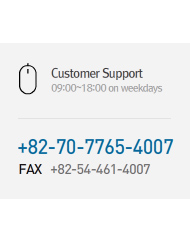Once the Data has been Exchanged
Page info
Name Violet / Date25-04-25 08:37 Hit9 Comment0Link
Contents
It works on half-duplex communication to implement the function of converting the TTL level into RS-485 level which means it can either transmit or receive at any time, not both, it can achieve a maximum transmission rate of 2.5Mbps. MAX485 transceiver draws a supply current of between 120μA and 500μA under the unloaded or fully loaded conditions when the driver is disabled. By converting from single-ended RS232 to differential RS422 and then, converting back from RS422 to RS232 at the other end of the line, distance and noise immunity can be greatly improved. The driver is limited for short-circuit current and the driver outputs can be placed at a high impedance state through the thermal shutdown circuit. The receiver input has a fail-safe feature that guarantees logic high output if the input is open circuit. If the 68HC11 is initialized as a master (by setting the MSTR bit in the SPCR control register as explained below) then bit 5 of the Port D data direction register (DDRD) determines whether /SS is an input or an output. RS232 uses inverse logic; that is, a positive bit at the 68HC11 UART is inverted by the onboard RS232 driver chip and appears as a negative signal on the serial cable.
The QScreen Controller’s transmit data signal TxD1 (pin 2 on the 9-pin serial connector) is connected to the terminal’s receive data signal RxD (pin 2 on its 9-pin connector). By connecting pairs of these handshaking signals together, the terminal or PC can be made to think that the QScreen Controller is always ready to send and receive data. A typical RS485 network can operate properly in the presence of reasonable ground differential voltages, withstand driver contentious situations, provide reliable communications in electrically noisy environments (good common mode rejection using twisted pair cable, shielding provides additional protection), and support thirty-two or more (many IC manufacturers have 1/2, 1/4, 1/8 unit load devices) drivers and receivers on the line. What does Galvanic Isolation do to improve my network? Once an RS485 network exceeds about 32 nodes on a network, serious consideration should be given to using galvanic isolation. While the conversion is "transparent" the software must be able to communicate with the expanded network features. In this case, cable connections must be made to Serial 1 at pins 5 and 6 of the 10-pin Serial Communications Header. Hardware is interfaced to the SPI via four PORTD pins named /SS, SCK, MOSI, and MISO brought out to pins 11 through 14 on the Digital I/O connector (see Appendix A).
Pre-coded device drivers configure the SPI for a standard data format, and it is easy to customize a data format and baud rate for your application. This function properly configures the directions of the SPI I/O pins, and configures the data transfer such that data is valid on the falling trailing edge of the clock, with the clock idling in the low state. If your computer does not have an RS-232 serial port, low cost USB-to-RS-232 serial cables are available; contact Mosaic Industries for details. The QScreen Controller’s kernel software contains a complete set of high level driver routines for the Serial2 port, and these functions are summarized in the Control-C Glossary. For example, an Automatic RS232 to RS485 converter, could be connected to a computer's RS232, full-duplex port, and transform it into an RS485 half-duplex, multi-drop network at distances up to 4000ft. Converters in most instances, pass data through the interface without changing the timing and/or protocol. The main reason behind using these Ethernet Cables over normal wires is that they provide much better protection against noise creeping in and distortion of the signal over high distances. In general, all devices on a network should use the same phase, polarity, and baud rate clock signal.
Up to 32-nodes (drivers and receivers) are allowed on one multi-drop, bi-directional network. This avoids timing problems (and software changes) that are difficult to deal with in typical systems. This makes our product, in fact, the only nonintrusive software serial protocol analyzer on the market today. RS232 was developed in the 1960s, and among other things, specified an electrical standard, a protocol standard, handshaking, and connector pin-out. The software routines, RS232Transmit() and RS232Silent() control the dual RS232 transmitters on the board. The program facilitates the development, debugging and analysis of software and hardware solutions that use serial communications for data exchange. Many terminals and PCs, however, do rely on hardware handshaking to determine when the other party (in this case the QScreen Controller) is ready to accept data. The QScreen Controller, however, does not implement hardware handshaking. A serial communications cable is also supplied with QScreen Starter Kits. The value of each termination resistor should be equal to the cable impedance (typically, 120 ohms for twisted pairs). Maintain as much distance as possible and cross any power cable at a right angle.
When you beloved this article along with you wish to receive details about what is rs485 cable kindly stop by our own site.
Warning: Use of undefined constant php - assumed 'php' (this will throw an Error in a future version of PHP) in /home1/icecap/public_html/theme/icecap/skin/board/basic_en/view.skin.php on line 149













